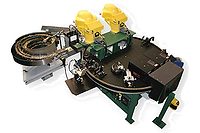Case Study Company Ensures Performance of Wireless Endoscopy System


The Given Diagnostic System has quickly gained acceptance among gastroenterologists for producing high-quality images of the small bowel without causing pain or discomfort. The system received clearance from the U.S. Food and Drug Administration in August 2001.
The Given system is designed to be flexible so that a patient can continue a normal daily routine including walking, driving and working. Therefore, the external antenna system must remain comfortable and secure for eight hours. The key to the system's success is to make certain the antennas, which pick up the transmitted data and forward it to the data recorder, are reliably adhered to the patient's skin.
To ensure the comfort and security of the antenna network, Given Imaging contacted Scapa Medical to devise a way in which the reusable antennas could be placed securely onto a patient's skin and then removed after eight hours without damaging the antenna or hurting the patient.

An Adhesive Solution
Scapa Medical worked closely with engineers and designers at Given Imaging to create a die-cut pocket device laminated with a medical-grade transdermal adhesive. Eight of these pockets, each containing a reusable antenna, are placed on the patient's abdomen before the test. Once the test is completed, the physician pulls apart the pocket to retrieve the antenna. The pocket is then removed from the skin and discarded.The pocket consists of multiple layers of laminated materials including an adhesive layer. Engineers faced a number of challenges during the design process. For example, Given Imaging required that the pocket had to be flexible so as not to interfere with daily routines. The material also had to breathe to prevent sweat buildup that could erode the adhesive, causing the pocket to detach early and impair the results of a very costly medical test.
Scapa Medical selected potential materials and adhesives carefully so that the pocket could be designed for comfort and manufactured economically. The R&D process for the antenna pockets took just 15 months from initial discussion to design completion, a rapid turnaround given the complicated design and material selection process.

About Scapa Medical
Scapa Medical is a supplier of customized component materials and converted products to the global medical device, wound care, hospital, pharmaceutical, and beauty care industries. With years of adhesive, materials, and converting expertise, the company provides a range of customized products, both coated and non-coated, to fit a variety of specialty medical applications.For more information, visit www.scapa.com.
Looking for a reprint of this article?
From high-res PDFs to custom plaques, order your copy today!




